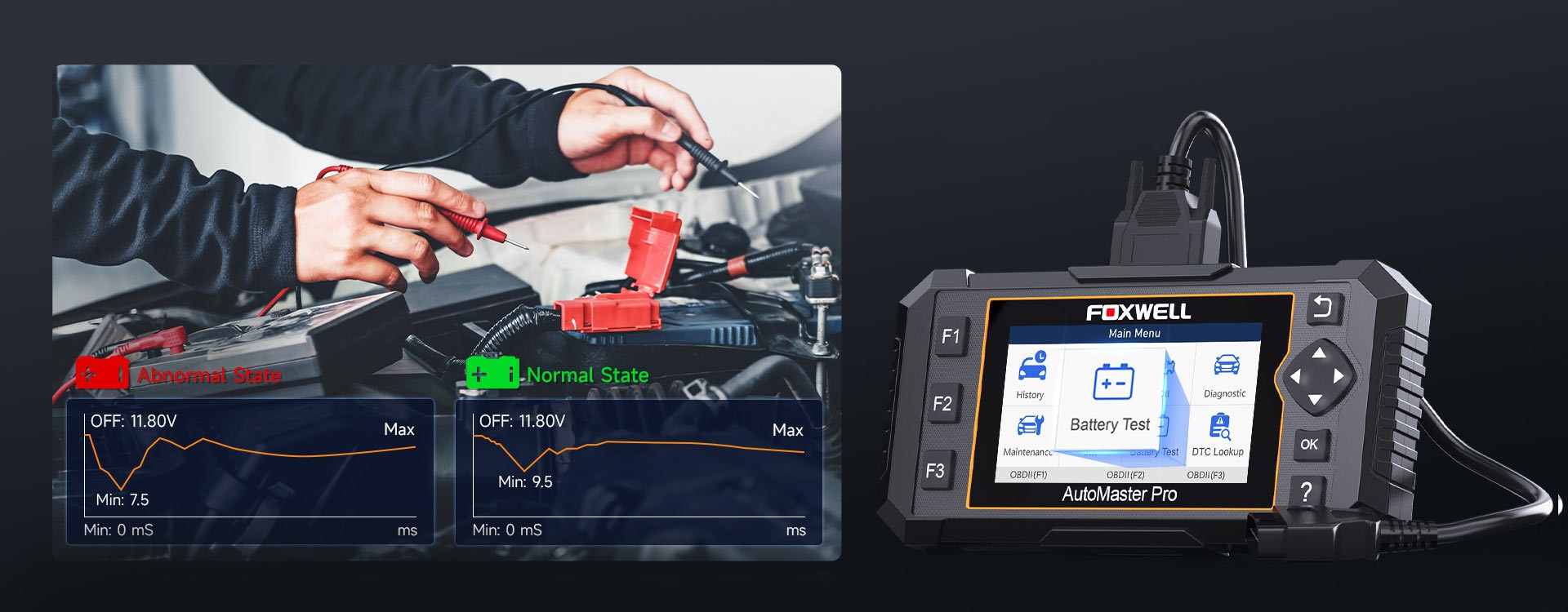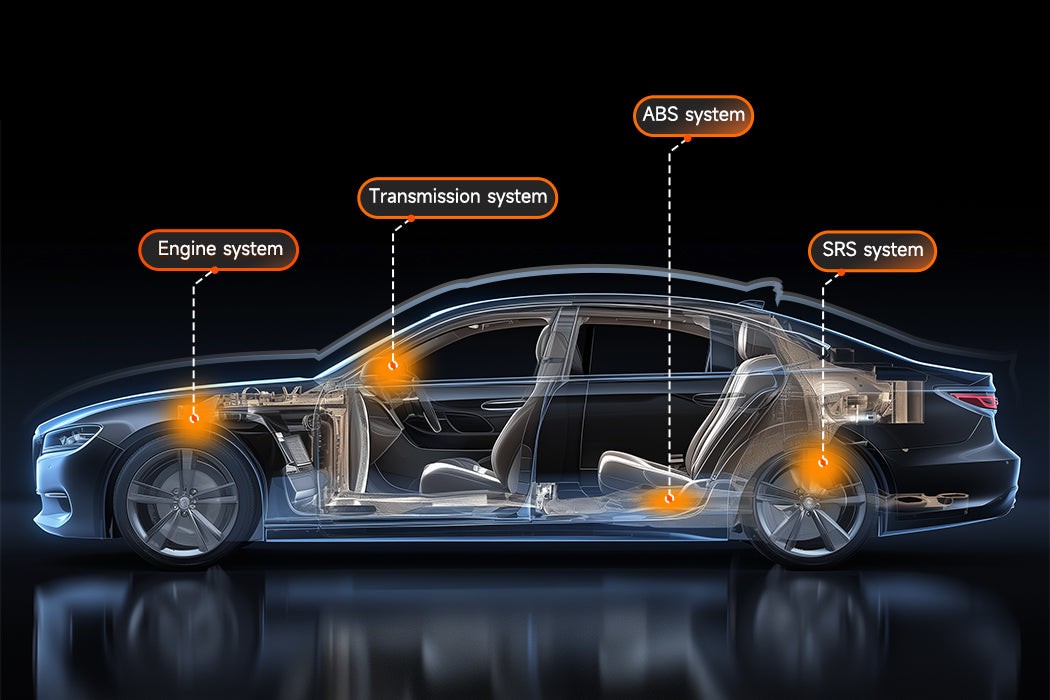Modern vehicles are packed with advanced technology, and electronic parking brakes (EPBs) are a prime example. These systems offer enhanced safety and convenience compared to traditional handbrakes. However, when it comes to servicing and maintenance, especially tasks like brake pad replacement, EPBs introduce a new layer of complexity. This is where an Obd2 Scanner With Electronic Parking Brake functionality becomes indispensable.
This guide, brought to you by the experts at cardiagnosticnearme.com, will delve into the world of OBD2 scanners equipped to handle EPB release and service. We’ll explain why these scanners are essential, what to look for in a tool, and recommend some of the best options available in the market. Whether you’re a seasoned mechanic or a DIY enthusiast, understanding how to use an OBD2 scanner for EPB systems is crucial for modern car maintenance.
Understanding the Electronic Parking Brake System
 Operating OBD2 Scanner | Foxwell
Operating OBD2 Scanner | Foxwell
The electronic parking brake (EPB) system is a sophisticated alternative to traditional parking brakes. Instead of relying on cables and levers, EPBs utilize electronic components for engagement and release. Key components of an EPB system include:
- Electronic Actuators: These are the workhorses of the EPB system, applying pressure to the brake pads against the rotors when the parking brake is engaged. They replace the mechanical force of a hand lever or foot pedal.
- Control Unit (ECU): The brain of the EPB system, the control unit manages the entire operation. It receives commands from the driver (via buttons or switches) or from diagnostic tools and controls the actuators accordingly.
- Driver Interface (Buttons/Switches): Modern vehicles typically use buttons or switches, conveniently located within the cabin, to activate and deactivate the parking brake, offering a more user-friendly experience than traditional levers.
Why EPB Release is Crucial for Brake Service
Releasing the electronic parking brake is not just a matter of convenience; it’s a critical step in many common maintenance procedures, particularly those related to the braking system. Attempting to perform tasks like brake pad replacement or rotor servicing without properly releasing the EPB can lead to several issues:
- Damage to Components: Forcing components without releasing the EPB can damage the actuators, calipers, and other parts of the braking system, leading to costly repairs.
- Incomplete Repairs: In many cases, it’s simply impossible to complete brake service tasks, such as retracting the caliper pistons for new brake pads, without first disengaging the EPB.
- Safety Risks: Improperly serviced brakes compromise vehicle safety. Ensuring the EPB is correctly released and serviced is vital for maintaining the overall braking performance of the vehicle.
Therefore, for any brake work on vehicles equipped with EPBs, using a tool to properly release the system is not optional—it’s essential.
OBD2 Scanners: Your Key to EPB System Access
OBD2 scanners are diagnostic tools that have become standard equipment for mechanics and informed car owners. They communicate with a vehicle’s onboard computer system, allowing users to read diagnostic trouble codes (DTCs), monitor live data, and perform specific functions. For vehicles with EPB systems, a compatible OBD2 scanner is the tool of choice for safely and effectively releasing the electronic parking brake.
These scanners range from basic code readers to advanced professional-grade diagnostic platforms. When it comes to EPB functionality, it’s important to choose a scanner that specifically lists “EPB release” or “electronic parking brake service” among its capabilities.
Step-by-Step Guide: Releasing EPB with an OBD2 Scanner
Releasing an EPB using an OBD2 scanner is a straightforward process, but it’s crucial to follow the steps correctly. Here’s a general guide:
- Connect the OBD2 Scanner: Locate the OBD-II port in your vehicle. It’s typically found under the dashboard on the driver’s side. Plug your OBD2 scanner securely into this port.
- Turn On the Ignition: Turn your vehicle’s ignition to the “ON” position. You usually don’t need to start the engine, but ensure that the vehicle’s electrical systems are active.
- Navigate to the EPB System Menu: Using your scanner’s interface, navigate to the “EPB,” “Brake Service,” or similar menu option. The exact menu names and layout will vary depending on your specific scanner model, but most are designed to be user-friendly and intuitive.
- Initiate the EPB Release Procedure: Select the “EPB Release” or “Service Mode” function within the EPB menu. Follow the on-screen prompts provided by your scanner. The scanner will then communicate with the vehicle’s EPB control unit, sending commands to retract the brake actuators and release the parking brake.
- Confirmation: Once the procedure is complete, your OBD2 scanner should display a confirmation message indicating that the EPB has been successfully released. You can then proceed with your brake maintenance or repair tasks.
When is an OBD2 Scanner with EPB Functionality Necessary?
There are several common scenarios where using an OBD2 scanner to release the EPB is essential:
- Brake Pad Replacement: As mentioned earlier, releasing the EPB is a prerequisite for retracting the brake calipers and replacing brake pads on vehicles with electronic parking brakes.
- Rotor and Caliper Service: Any service work involving brake rotors or calipers necessitates EPB release to safely and effectively work on these components.
- EPB System Diagnostics: When diagnosing issues within the EPB system itself, an OBD2 scanner can be invaluable for accessing system data, running tests, and potentially releasing the brake for further inspection or repair.
- Emergency Situations: In rare cases where the EPB system malfunctions or becomes stuck, an OBD2 scanner might offer an override function to release the brake and allow the vehicle to be moved for repair.
Benefits of Using an OBD2 Scanner for EPB Release
Using an OBD2 scanner to manage EPB release offers significant advantages over attempting manual methods, which are often impractical or impossible on modern systems:
- Precision and Safety: Scanners ensure the EPB is released correctly and safely, minimizing the risk of damage to sensitive brake components. This precision is vital for maintaining the long-term reliability of the braking system.
- User-Friendliness: Modern OBD2 scanners are designed with user-friendly interfaces, making the EPB release process accessible even to DIYers with basic mechanical knowledge.
- Comprehensive Diagnostics: Many OBD2 scanners that offer EPB release functionality also provide broader diagnostic capabilities. They can read and clear trouble codes from other vehicle systems, offering a more versatile tool for overall car maintenance and troubleshooting.
- Time Efficiency: Using a scanner streamlines the EPB release process, saving considerable time compared to potential manual workarounds (if any exist for a specific vehicle). This efficiency is valuable for both professional mechanics and DIY enthusiasts.
For example, tools like the Foxwell NT909 are specifically designed to offer these benefits, making them a worthwhile investment for anyone working on modern vehicles.
 Function of Car Scanner | Foxwell
Function of Car Scanner | Foxwell
Conclusion: Invest in the Right Tool for EPB Service
As electronic parking brakes become increasingly common in modern vehicles, having the right tools for service and maintenance is no longer optional—it’s a necessity. An OBD2 scanner with electronic parking brake release functionality is an essential investment for both professional mechanics and DIY car owners who want to maintain their vehicles effectively and safely.
By understanding how to use an OBD2 scanner for EPB systems, you empower yourself to perform brake services correctly, ensure vehicle safety, and potentially save money on professional mechanic fees. Whether you choose a basic EPB service tool or a more advanced diagnostic scanner like the Foxwell NT909, make sure it’s compatible with your vehicle and offers the EPB functions you need. Investing in the right OBD2 scanner is an investment in the longevity, safety, and reliability of your vehicle.
FAQs about OBD2 Scanners and Electronic Parking Brakes
What exactly does an OBD2 scanner with EPB function do?
An OBD2 scanner with EPB functionality can communicate with your vehicle’s electronic parking brake system to safely release the brake for maintenance, such as brake pad replacement. It sends commands to the EPB control unit to retract the brake actuators.
Can I release the electronic parking brake without a scanner?
In some very specific older models, there might be manual override procedures. However, for most modern vehicles with EPBs, a diagnostic scanner is required for safe and proper release. Attempting manual methods can damage the system.
What should I look for in an OBD2 scanner for EPB service?
Ensure the scanner specifically lists “EPB release,” “electronic parking brake service,” or similar functions in its specifications. Check compatibility with your vehicle’s make and model. Consider features like user-friendliness, diagnostic capabilities beyond EPB, and brand reputation.